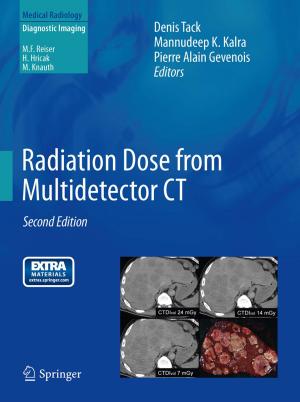Lymphoid Neoplasias II
Clinical and Therapeutic Aspects
Nonfiction, Health & Well Being, Medical, Specialties, Oncology| Author: | ISBN: | 9783642812491 | |
| Publisher: | Springer Berlin Heidelberg | Publication: | December 6, 2012 |
| Imprint: | Springer | Language: | English |
| Author: | |
| ISBN: | 9783642812491 |
| Publisher: | Springer Berlin Heidelberg |
| Publication: | December 6, 2012 |
| Imprint: | Springer |
| Language: | English |
We have studied 24 cases of secondarily leukemic (stage V) lymphosarcoma (LS), 31 cases of "d'emblee" leukemic LS, and ten cases of lymphoid leukemic neoplasias transitional between "d'emblee" leukemic LS and chronic lymphocytic leukemia (eLL). These cases only concern the common types ofthe WHO classification ofLS, i.e., the prolymphocytic, the lymphoblastic, and the immunoblastic. Some cases have also been classified by cell surface markers. The secondarily leukemic conversion occurred in 40% of the lymphoblastic types, in 14% of the prolymphocytic types, and in 17% of the immunoblastic types. It never occurred at stage I but could occur after any other stage. The mediastinal involvement was observed in three types, but most often in the lymphoblastic type. The prognosis after an acute lymphoid leukemia (ALL) treatment comprising active immunotherapy following chemo(radio)therapy is better for the leukemic prolymphocytic and lymphoblastic LS than for the immunoblastic type. Two patients (one of the lymphoblastic type) are in complete remission after 8 and 5 years, respectively. We have described ten cases of "d'emblee" leukemic LS with either large lymphoid or extra lymphoid masses, bone marrow leukemic cell involvement, and LS aspects of neoplastic cells. Mediastinal, abdominal, or other tumor masses are frequent.
We have studied 24 cases of secondarily leukemic (stage V) lymphosarcoma (LS), 31 cases of "d'emblee" leukemic LS, and ten cases of lymphoid leukemic neoplasias transitional between "d'emblee" leukemic LS and chronic lymphocytic leukemia (eLL). These cases only concern the common types ofthe WHO classification ofLS, i.e., the prolymphocytic, the lymphoblastic, and the immunoblastic. Some cases have also been classified by cell surface markers. The secondarily leukemic conversion occurred in 40% of the lymphoblastic types, in 14% of the prolymphocytic types, and in 17% of the immunoblastic types. It never occurred at stage I but could occur after any other stage. The mediastinal involvement was observed in three types, but most often in the lymphoblastic type. The prognosis after an acute lymphoid leukemia (ALL) treatment comprising active immunotherapy following chemo(radio)therapy is better for the leukemic prolymphocytic and lymphoblastic LS than for the immunoblastic type. Two patients (one of the lymphoblastic type) are in complete remission after 8 and 5 years, respectively. We have described ten cases of "d'emblee" leukemic LS with either large lymphoid or extra lymphoid masses, bone marrow leukemic cell involvement, and LS aspects of neoplastic cells. Mediastinal, abdominal, or other tumor masses are frequent.















